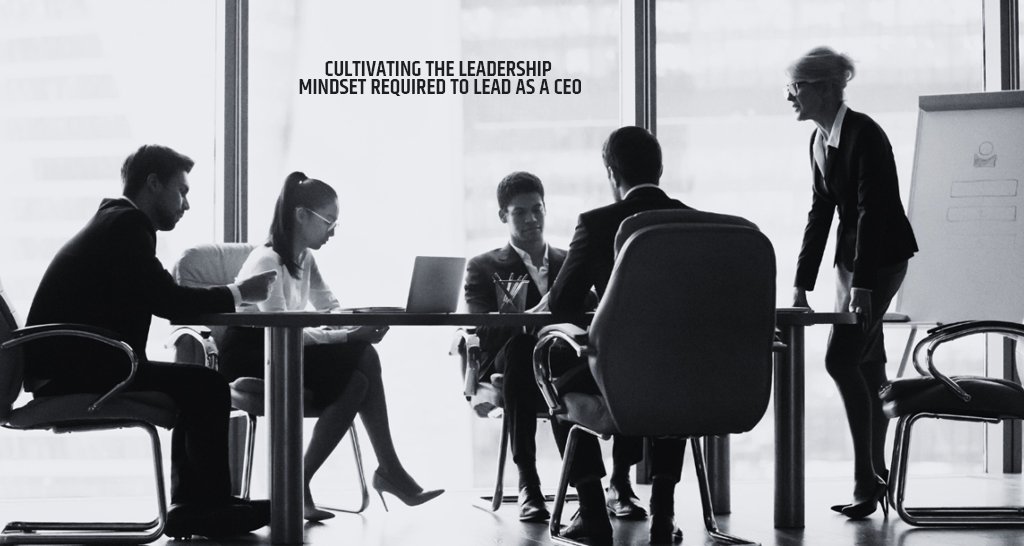Understanding the Leadership Mindset
A leadership mindset constitutes a unique set of beliefs, attitudes, and values that define a leader’s approach to their role. For a Chief Executive Officer (CEO), possessing a strong leadership mindset is crucial as it directly influences organizational culture, decision-making, and overall performance. Effective leaders are characterized by several key traits, including resilience, vision, and empathy. These qualities empower them to navigate challenges while simultaneously inspiring their teams to achieve collective goals.
Resilience, the ability to bounce back from setbacks, is essential in a CEO’s arsenal. The business landscape is often unpredictable, and a resilient leader can maintain focus and drive, even when faced with adversity. This characteristic not only shapes their decision-making process but also serves as a model for employees, cultivating a culture of perseverance within the organization.
In addition, a clear and compelling vision is vital for guiding an organization. CEO leadership is inherently tied to the ability to set strategic goals and make informed decisions that steer the company towards long-term success. A visionary leader can communicate their ideas effectively, ensuring alignment of team efforts with organizational objectives, fostering a sense of purpose among employees.
Empathy stands out as another critical trait that defines effective leadership. Understanding and valuing employees’ perspectives contribute to stronger team dynamics and better collaboration. A CEO who practices empathy can create an inclusive work environment where individuals feel heard, respected, and motivated. This alignment of a leader’s mindset with the organization’s goals and values is paramount, reinforcing the notion that the right mindset influences not only decision-making but also the overall dynamics of the team. In summary, cultivating a leadership mindset is indispensable for CEOs aiming to lead effectively and inspire positive change within their organizations.
Self-Reflection and Personal Growth
In the realm of executive leadership, the capacity for self-reflection serves as a cornerstone for cultivating an effective leadership mindset. For a CEO, this practice involves a continual process of assessing one’s own thoughts, actions, and emotional responses to both successes and setbacks. By engaging in self-reflection, leaders gain insights into their own strengths and weaknesses, enabling them to sharpen their decision-making skills and enhance their overall effectiveness.
Utilizing tools such as journaling is one practical method to foster this process. Regularly documenting thoughts and experiences allows CEOs to track patterns in their behavior, observe their emotional responses to various situations, and recognize areas that require improvement. The act of writing can clarify thoughts and feelings, subsequently leading to a deeper understanding of oneself. Additionally, participating in peer feedback sessions can provide CEOs with diverse perspectives regarding their leadership style. Constructive feedback from colleagues can unveil blind spots that self-reflection may not address, promoting a well-rounded approach to personal development.
Moreover, seeking guidance from leadership coaches can significantly contribute to a CEO’s emotional intelligence—a crucial component in navigating the complexities inherent in high-stakes environments. Coaches offer targeted strategies for self-improvement, enabling leaders to identify specific emotional triggers and enhancing their ability to manage teams effectively during periods of uncertainty. This tailored coaching can establish a framework for personal growth that underpins a leader’s ability to align their vision with their team’s aspirations.
Through consistent self-reflection and a commitment to personal growth, CEOs can cultivate the leadership mindset necessary to inspire their teams and navigate organizational challenges with confidence and clarity.
Building a Collaborative Culture
In today’s dynamic business landscape, fostering a collaborative culture is essential for CEOs aiming to cultivate a leadership mindset that resonates throughout the organization. A collaborative culture encourages open communication and teamwork, thus promoting an environment where innovation and creativity can thrive. To achieve this, CEOs must lead by example, demonstrating the value of collaboration through their own actions and behaviors.
One effective strategy for building a collaborative culture is to implement regular team meetings that encourage sharing ideas and discussing challenges. These meetings should be designed to foster inclusivity, inviting input from all levels of the organization. Listening to diverse perspectives not only enhances decision-making but also empowers employees, making them feel valued and heard. For instance, Satya Nadella, CEO of Microsoft, transformed the company’s culture by emphasizing a growth mindset, which facilitated open dialogue and collaboration among teams.
In addition to regular meetings, leveraging technology can significantly enhance communication across departments. Tools such as collaborative platforms allow teams to share documents, manage projects, and communicate seamlessly, regardless of their physical locations. This approach not only improves efficiency but also fosters a sense of unity in achieving common goals. Another notable example is Eric Schmidt, former CEO of Google, who promoted a culture of transparency and trust, integrating communication tools that supported collaboration among engineers and product managers.
Furthermore, recognizing and rewarding collaborative efforts can reinforce this culture within the organization. By celebrating team achievements, CEOs can inspire employees to prioritize collaboration over individual success, fostering a sense of community. As seen in companies like Zappos, a strong focus on culture and team dynamics has led to enhanced employee satisfaction and loyalty. In conclusion, nurturing a collaborative culture is pivotal for CEOs striving to develop a leadership mindset that fosters adaptability, creativity, and organizational success.
Continuous Learning and Adaptability
In an ever-evolving business environment, the need for continuous learning has never been more vital for CEOs. As leaders, they must remain at the forefront of industry trends, technological advancements, and shifting market dynamics. This ongoing pursuit of knowledge not only empowers CEOs with the necessary skills and insights but also enhances their adaptability in addressing emerging challenges. Corporate governance, strategic decision-making, and innovation all require a robust foundation of up-to-date information, so fostering a culture that values learning and development is essential for organizational growth.
One effective avenue for lifelong learning involves participating in professional development programs. These programs may range from formal education, such as executive training courses or advanced degrees, to workshops and seminars tailored to specific skills. By engaging in these experiences, CEOs can acquire new perspectives and methodologies that can be directly applicable to their roles. Moreover, personal development activities such as coaching or mentorship can provide personalized feedback, allowing leaders to refine their approaches and strategies more effectively.
Another important dimension of continuous learning is staying connected with industry research. By engaging with case studies, white papers, and market analysis, CEOs can better understand prevailing trends and anticipate shifts in consumer behavior. Furthermore, subscribing to reputable publications and participating in industry conferences can cultivate a more comprehensive knowledge base. Networking with peers and industry insiders also provides insights that may not be available through traditional channels, enabling leaders to remain agile in their decision-making.
Ultimately, embracing change and fostering an organizational culture centered around continuous learning can significantly elevate a CEO’s effectiveness. A steadfast commitment to learning equips leaders to navigate challenges and seize opportunities, thereby driving the organization toward sustained success in a competitive landscape. Such adaptability not only enhances the leader’s own capabilities but also inspires all members of the organization to pursue growth, innovation, and resilience.



